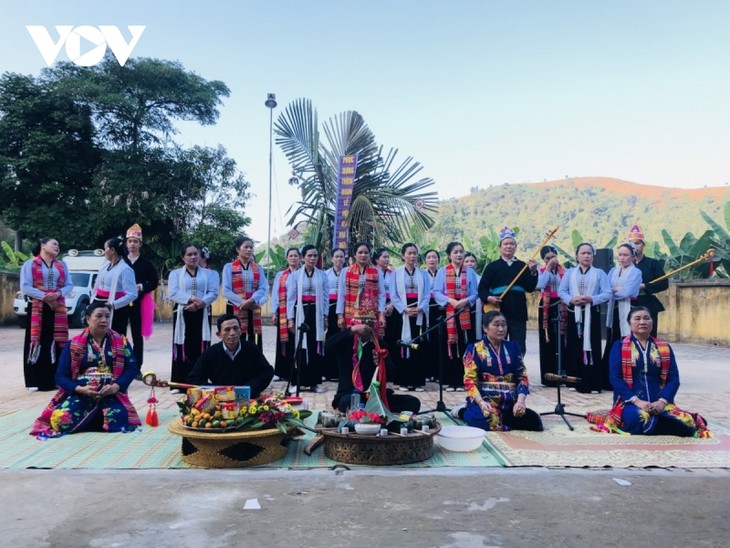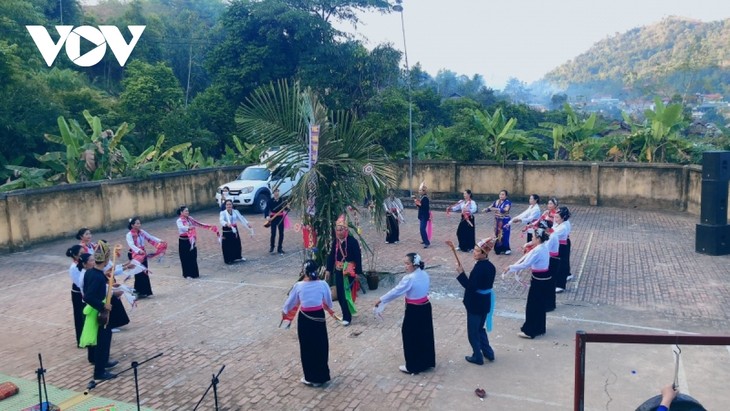(VOVWORLD) - The Khang ethnic minority people in Quynh Nhai district, Son La province, hold a Kin pang ceremony at the beginning of the new lunar year to show gratitude of adopted children for their adoptive parents, who are shamans.
 Revitalization of Kin Pang ceremony of the Khang (photo: VOV) Revitalization of Kin Pang ceremony of the Khang (photo: VOV) |
The Khang have a custom that when sick people receive medical treatment but can’t get well, their families invite a shaman or a healer to give them spiritual encouragement. Whoever recovers after the worship will ask to become an adopted child of the shaman. The more people that get well, the more children the shaman adopts.
At the beginning of the year, biological children and adopted children from different places gather at the shaman’s house to organize a Kin pang ceremony to thank their adoptive parents. The shaman decides an appropriate day for the get-together.
Lo Van Bun is a senior villager in Chieng On commune with profound knowledge of the Khang’s customs. “Biological and adopted children contribute rice, pork, and chicken to organize the ceremony and thank the shaman for healing them. Those who were seriously ill should bring a bigger offering, but in general people feel free to contribute depending on their financial situation. The adopted children think their parents cured them, so they show gratitude to them.”
 Community dance in a Kin Pang ceremony of the Khang (photo: VOV) Community dance in a Kin Pang ceremony of the Khang (photo: VOV) |
In the morning the house’s owner prepares a ritual to inform his ancestors of the Kin pang ceremony. They sing and dance joyfully. The worship takes place at about 5 or 6 pm. The adopted children place their offerings on the worshiping table. The shaman burns incenses and begins the worship with a Tang bu dance to chase away bad luck and pray for better things in the New Year.
Tang bu is a special dance of the Khang. They prepare a wood plank which is about 15 cm thick and 6 m long, 100 to 200 bamboo tubes, 3 vases of wine, and a Neu tree decorated with images of animals and plants. A Neu tree is a tall bamboo, which is believed to be able to drive away evils.
Lo Van Bun said: “When all tools for the Tang bu dance are ready, the shaman’s wife hold two bamboo tubes to poke on the wooden board to start the Tang bu dance. Then all the biological and adopted children join the dance of up to a hundred people.”
The dance lasts until 8 or 9 pm before all the participants eat the worship meal together. Young bamboo shoot soup is an indispensable part of the meal. After eating they continue to dance through the night. In the morning the shaman holds a ritual to wrap up the ceremony and say farewell to the ancestors.
Đieu Thi Nhat, Head of Quynh Nhai district’s Culture Office, said: “The Khang is a small group in our province. Their folk singing and dance are at the risk of disappearing. We have launched many activities to preserve and revitalize their festivals, folk dance and singing, and customs, including the Kin pang ceremony. It’s an influential event in the community.”